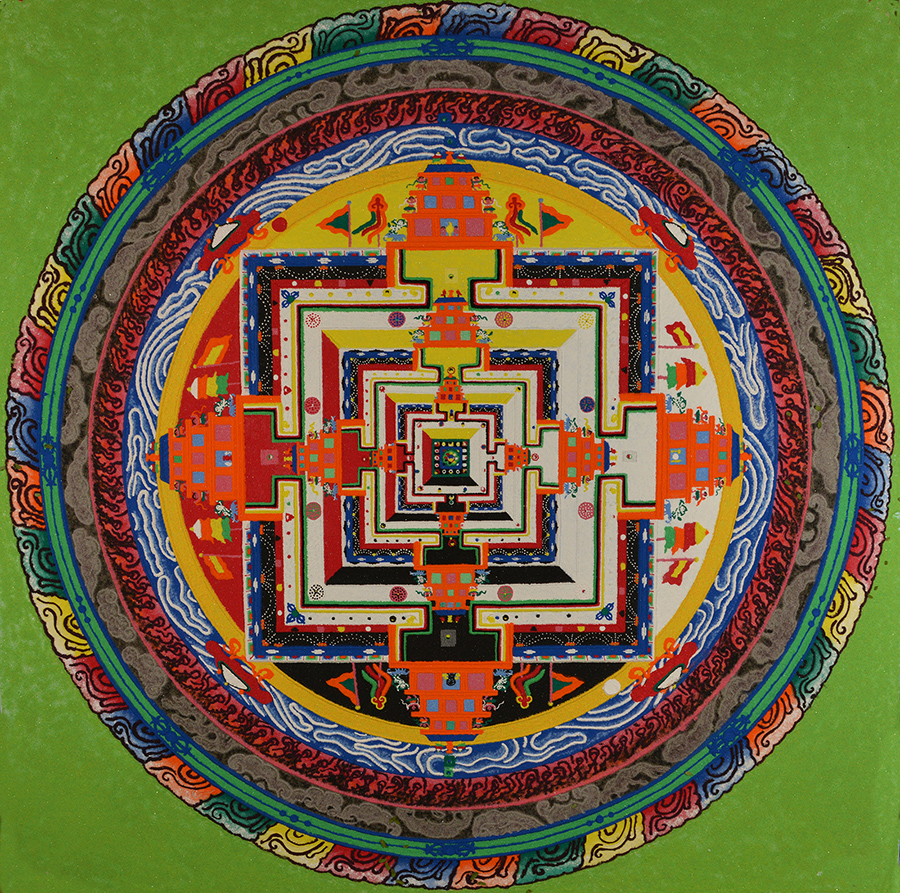A new institute for Kālacakra
|
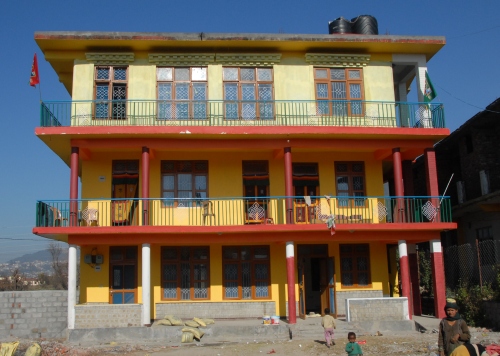
|
Mentioned elsewhere on this website (for example, here), Choekyi Nangwa Rinpoche, is the main Jonang teacher living in the Indian subcontinent and teaching the Jonang tradition of Kālacakra and the Six Yogas. He left Tibet 22 years ago, and has since 1998 been running the Jonang monastery Takten Phuntsok Choling, in Shimla, northern India.
| Jonang Duekhor Jordruk Gomdra Choekhor Ling Monastery Following advice from His Holiness the Dalai Lama, Choekyi Nangwa Rinpoche, Vajra Master of the main Jonang monastery in India, Takten Phuntsok Ling in Shimla, in April 2015 founded Jonang Duekhor Jordruk Gomdra Choekhor Ling Monastery, near Norbulingka in Dharamsala. His Holiness's intention had been for a centre for the teaching of Kalachakra and the Six Yogas, that would be purely a Jonang centre, without combining any other traditions, but open to members of all traditions. When His Holiness the Dalai Lama was briefed about this during a private audience at his residence on 27 May 2015, His Holiness was very pleased and stated that "You Jonangpas have become the keepers of the Kalachakra teachings. It is wonderful if there is such a non-sectarian institute in place for studying Kalachakra. I have special interest in the 'darkness retreat' (mun mtshams) and other meditation practices of the Six Yogas of Kalachakra. Therefore I truly appreciate and support your excellent work." Along with his words of advice, His Holiness the Dalai Lama named the monastery 'Jonang Duekhor Jordruk Gomdra Choekhor Ling'. At present there are around twenty monks who have begun studying there. Main Objectives of the Monastery: Primarily, the study and practice of the complete Kalachakra teachings beginning from the preliminaries. To translate the Tibetan Kalachakra teachings into English and other languages to make the study of the inner, outer and other teachings of Kalachakra available to everyone. Properly to preserve the ancient tradition by collecting and researching old representations of the enlightened body, speech and mind of Kalachakra: thangkas, mandalas, texts, and so forth. To invite prominent abbots, tulkus and geshes and organize spiritual activities in the monastery during religious festivals and celebrate them according to tradition. To provide facilities for practitioners of the glorious Kalachakra tradition: monk and nun students studying in various monastic institutes and other serious practitioners from all over the world. Since Jonang Duekhor Jordruk Gomdra Choekhor Ling Monastery is a newly established monastery in Dharamsala, obviously we have numerous problems at the moment. Therefore we sincerely request all generous and religious people to kindly come forward to support us at this, the toughest period for our monastery. 6 July 2015. |
| Appeal for donations: The new institute currently has no income and is in need of financial assistance. The original building is being renovated and extended; also, the institute will need many other resources, including books and other teaching, study and research materials. If you are able to help, please send a donation to: Account holders: Choekyi Nangpa, Ven Damchoe Palsang, Lobsang Yarphel. Account: 3903101000979 Swift: CNRBINBBFFC MICR: 176015053 IFSC: CNRB0003903 Name and address of bank branch: Canara Bank Dharamsala CTA, Secretariat, Gangchen Kyishong. Kangra Dist, Dharamsala Himachal Pradesh-176215 India. Tel: +91-8192-226142. email:cb3903@canarabank.com. |
| Contact details: Email: gomgrwa@gmail.com. Tel: +91-1892-655777 Website: www.kalacakra-institute.org (Under construction). |
| First Course on the Six Yogas. Details of the first course to be given on Kālacakra and the Six Yogas are now available. These are here and here. |
Choekyi Nangwa Rinpoche therefore agreed to establish a new monastery in Dharamsala, not far from the residence of His Holiness. A photo of the new monastery is shown above, taken in its early stages in February 2015, two months before the opening. His Holiness gave the new monastery the name Jonang Dukhor Jordruk Gomdra Chokhor Ling (dus 'khor sbyor drug sgom sgrwa chos skor gling); the name means "Dharma Cakra Monastery, Jonang Meditation Institute for Kālacakra and the Six Yogas"; in brief: Dukhor Gomdra, "Kālacakra Meditation Institute". The official announcement of the establishment of the monastery is in the box to the left.
The Jonang tradition
Among the five main traditions of Tibetan Buddhism – Kagyu, Gelug, Sakya, Nyingma and Jonang – the Jonang have not been particularly well known outside of Tibet. After their persecution in the 17th century, the main Jonang monasteries have been located in the Golok and Amdo regions, far to the east of central Tibet, in what is now considered western Sichuan province. The damage inflicted by the cultural revolution was minor compared to that experienced in the rest of Tibet, and so very few refugees escaped to India from those eastern regions at that time; it would also have been more difficult from those areas.
However, gradually Jonang teachers have found their way to India and the rest of the world, and the main Jonang texts have become readily available during the last 15 years, mainly due to the efforts of Gene Smith. Western academics have also paid more attention to the Jonang tradition, particularly since Matthew Kapstein described the writings of Banda Gelek 20 years ago (a turning point for this writer).
The Jonang tradition is considered to have been founded when Kunpang Thuje Tsondru (kun spang thugs rje brtson 'grus, 1243-1313) established the original monastery at Jomonang in southern central Tibet. He is also particularly famous for having identified, among the numerous traditions of Kālacakra and the Six Yogas that passed into Tibet, 17 distinct traditions of the Six Yogas. He combined these together, and the great strength of the Jonang Six Yoga tradition is that it preserves to the present day this great body of learning and experience in a single coherent system. This is the speciality of the Jonang tradition.
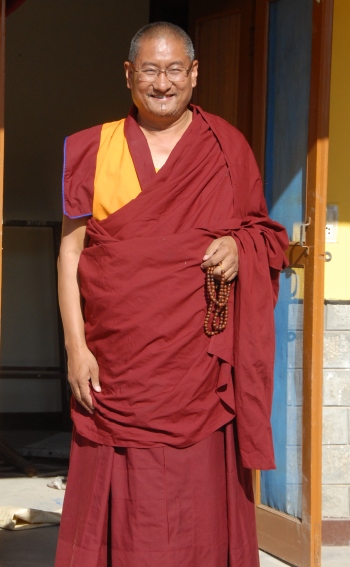
|
| Choekyi Nangwa Rinpoche at Dukhor Gomdra. |
On this term extrinsic emptiness, it is often contrasted with intrinsic emptiness (rang stong), as if the two were opposing or contradictory philosophies. This is nonsense; they describe two different aspects of the nature of reality. They are both terms devised in Tibet and not translations of Sanskrit terms, although they describe concepts that are found in the Indian traditions. For example, in a Kālacakra context, a famous phrase in the Kālacakra commentary, the Vimalaprabhā, quoting the Mañjuśrī Nāmasaṃgīti, expresses both of these concepts together: "That which possesses all forms itself has no form". This is a reference to the basic nature of mind, or buddha-nature, the basis of all things but which is itself devoid of any tangible characteristic. That it "has no form" expresses intrinsic emptiness, the fact that all things lack intrinsic existence and are brought about by causes and conditions; however, it "possesses all forms" indicates that it is the basis of all experience, and is itself existent but is not dependent on any other (extrinsic, sometimes other-, emptiness) cause or condition.
Dolpopa's legacy is extensive. He constructed a famous stupa at Jonang, based on the descriptions given in the great Kālacakra Tantra commentary, the Vimalaprabhā; this still survives. He supervised a new translation of the tantra and the Vimalaprabhā and made extensive annotations to the commentary. He left a significant body of other written works, among which one stands out: "Mountain Dharma, Ocean of Certainty" (ri chos nges don rgya mtsho). Cyrus Stearns has written about the life and teachings of Dolpopa in "The Buddha from Dolpo: A Study of the Life and Thought of the Tibetan Master Dolpopa Sherab Gyaltsen".
A few generations later came perhaps the greatest of all the Jonang teachers, Tāranātha (1575 - 1634). You may often see him referred to as the "historian Tāranātha"; this is because he first became known in the west for the translation of his "History of Buddhism in India", translated by Lama Chimpa And Alaka Chattopadhyaya and first published in 1970. But he was much more than a historian. I cannot put it better than Matthew Kapstein, who wrote that Tāranātha "should be regarded as one of the greatest contributors to the study of tantrism and yoga, in any time, place or methodological tradition..." This is no exaggeration; Tāranātha's writings are still considered definitive and are used by traditions other than the Jonang.
In the edition published at his own monastery, Takten Phuntsok Ling, his works comprise 17 volumes, but this edition did not include all of his writing. In particular, he wrote a comprehensive set of practice and instruction texts on Kālacakra and the Six Yogas. On the generation process he composed sādhanas for the nine-deity maṇḍala, mind maṇḍala and the full triple body, speech and mind maṇḍala. He also wrote offering rituals and extensive instruction texts on the triple maṇḍala practice and the main ritual. On the Six Yoga perfection process practices he wrote a major instruction text, a supplementary text to complement that and also a text on the background theory of the Six Yogas. He also composed many minor texts such as fire ritual, explanation of signs of success in practice, and so on. These are all still in use today, and have also been adopted by the Karma Kagyu tradition for that school's practice of Kālacakra.
In 1995, Matthew Kapstein, in his paper entitled "From Kun-mkhyen Dol-po-pa to 'Ba'-mda' Dge-legs: Three Jo-nang-pa Masters on the Interpretation of the Prajñāpāramitā", introduced the western world to another great Jonang teacher, Banda Gelek (1844 - 1904). Matthew had travelled to Dzamthang (see this web page for some photographs from Dzamthang) in Eastern Tibet (now part of Sichuan) and obtained a set of the collected works of Banda Gelek in 22 volumes. He did not write any practice texts regarding Kālacakra – those by Tāranātha are still considered definitive – but he did write extensive instruction texts on both the generation and perfection process meditations and on the theory of the Six Yogas. Reading his texts on Kālacakra one gets the impression that, unlike previous authors, he wrote down the oral instructions, perhaps out of some concern that the details might become lost.
One interesting feature of his writings is significant material on the Six Dharmas of Nāropa, a set of practices that he learned from no less than Jamgon Kongtrul Lodro Thaye. To this writer's mind, his instruction text on the Six Dharmas is the most comprehensive written and his instruction text on the preliminary practices of the Six Dharmas is the only one to have been composed (at least, the only one that I have come across).
The teachings of the Jonang tradition that continues to flourish in the Golok and Amdo regions of eastern Tibet are mainly based on the works of these three great teachers, but also many others, particularly those that have lived since the time of Banda Gelek. These include Tsoknyi Gyatso, Lodro Drakpa, and, the teacher of Choekyi Nangwa Rinpoche, Yonten Zangpo (1928 - 2002).
Current activities
At the time of writing, Choekyi Nangwa Rinpoche is travelling in the west giving Kālacakra and Six Yoga Preliminary Practice instructions. Below are some photographs from the full Seven Empowerments Raising the Child given in Brazil, based on the empowerment text written by Banda Gelek, the Ocean of Great Mystery (gsang chen rgya mtsho). This is the first time that the full Jonang empowerment has been given in the west. This web page will be changed and updated as the process of developing the new Kālacakra Meditation Institute proceeds. In particular, when the requirements are in place, a PayPal button for donations will be available here, so please, do visit again! Also, when the new Kālacakra Meditation Institute has its own website, a link will be provided here.
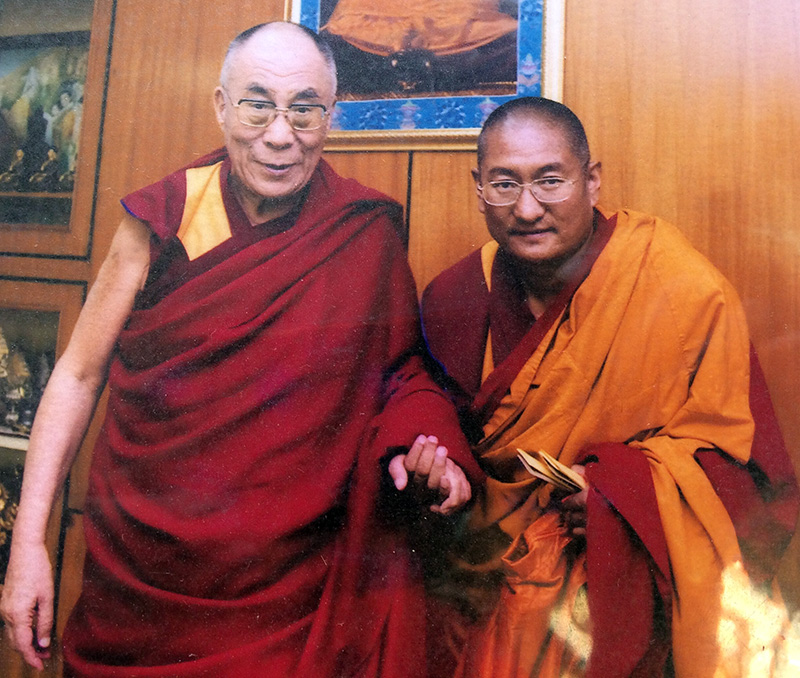
|
| Choekyi Nangwa Rinpoche together with His Holiness the Dalai Lama. |
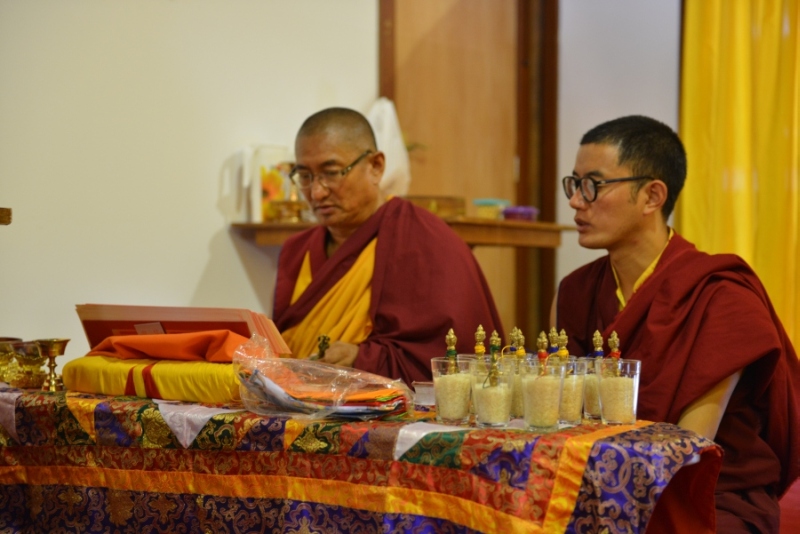
|
| Ritual preparations begin. |
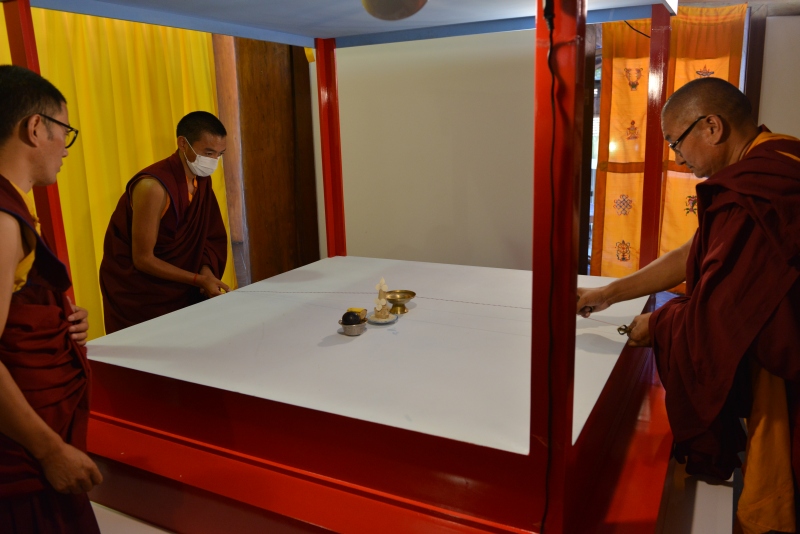
|
| The ritual creation of the east-west central line for the maṇḍala; the string used is rather faint in the photograph. |
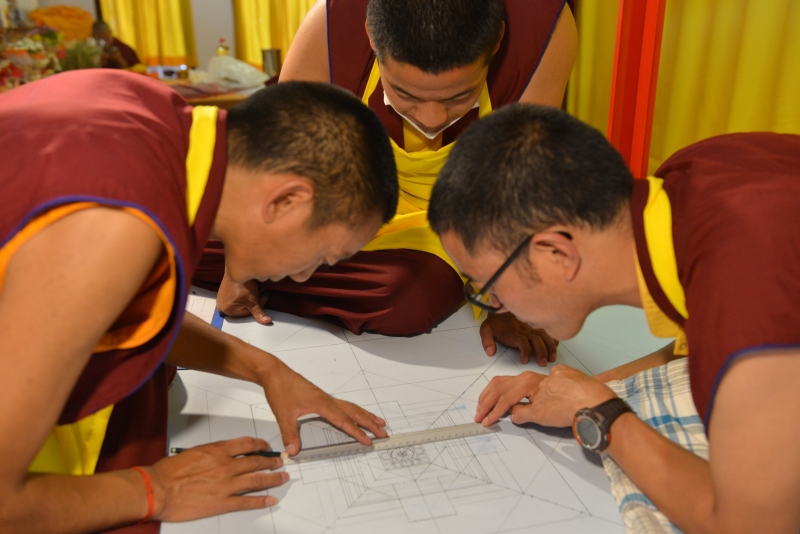
|
| The drawing of the line structure (thig rtsa) for the maṇḍala begins. |
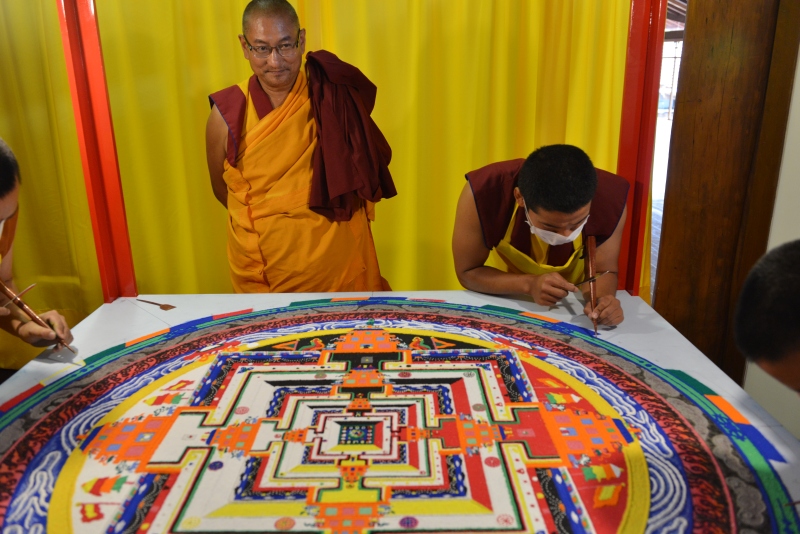
|
| The maṇḍala nears completion. |
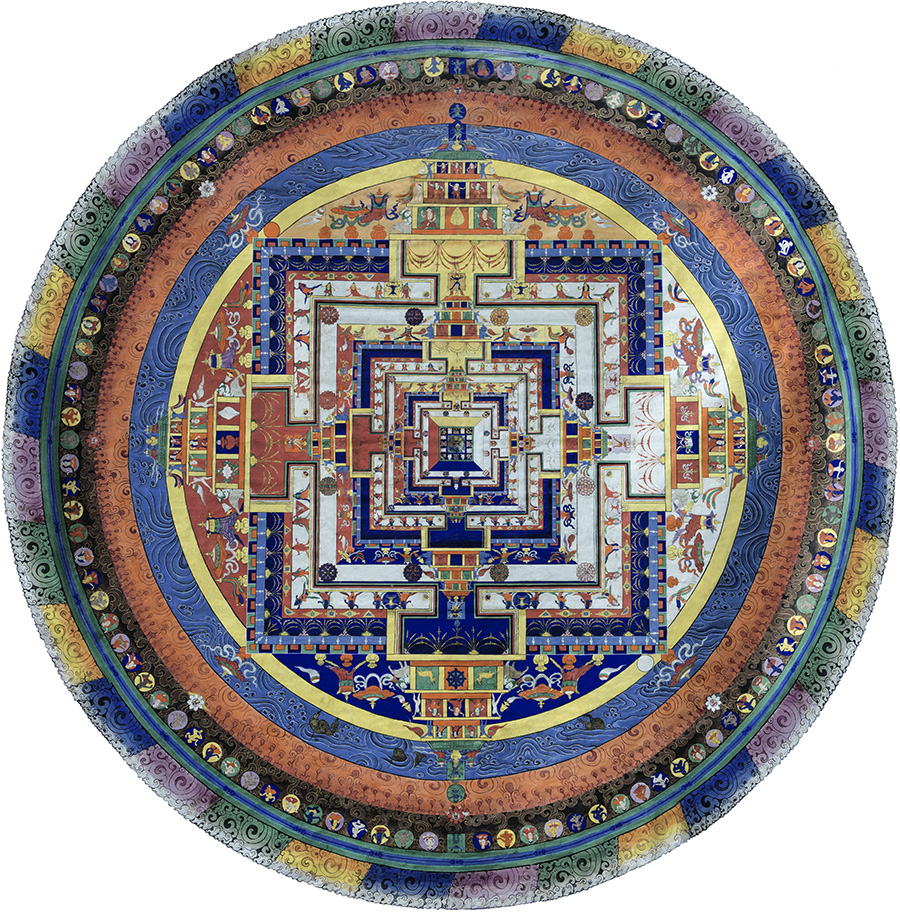
|
| A painted Kālacakra maṇḍala from the Jonang tradition. 200 years old, this maṇḍala is in Jyayul Monastery, Dzamthang. |
 |
E. Henning. Last updated 13 February 2016. Return to Home Page. |
